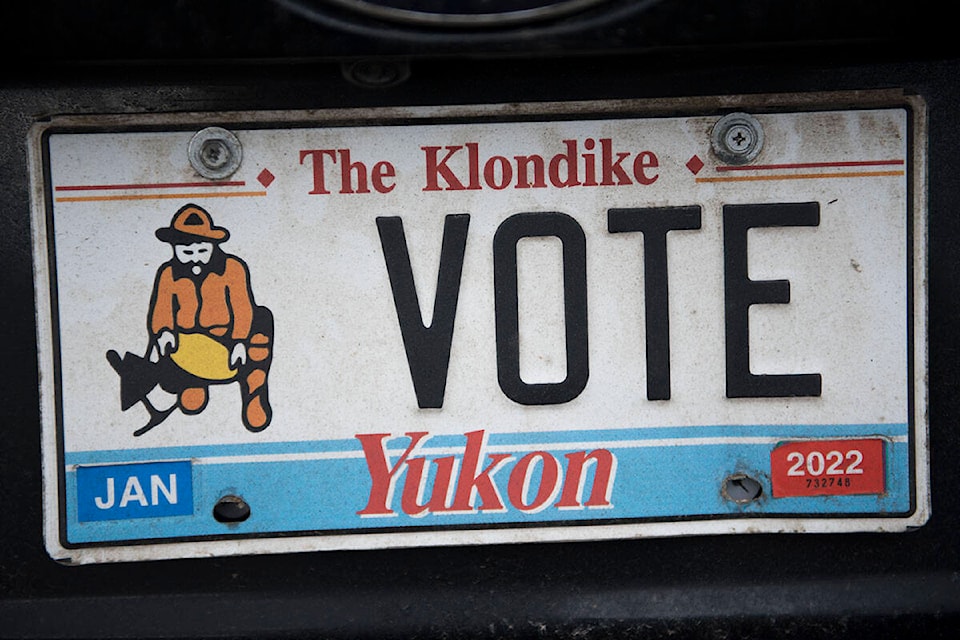While the Yukon only counts as one federal riding, the Elections Canada results for each poll provides an insight into how the territory’s different regions voted.
This year Whitehorse – where the vast majority of votes are cast – was solidly Liberal red, along with Haines Junction, Old Crow, Carmacks, Mount Lorne and Marsh Lake. Percentage-wise, Hanley led in Old Crow, where he took 64 per cent of the 36 votes cast, and Pelly Crossing, where he claimed almost half the ballots cast.
The polling regions where the Conservative Party dominated included Faro, Watson Lake and Tagish. While Dunlop took only 23 per cent of the vote in the capital, she dominated her three winning polling areas with 38 per cent of the vote in each one.
Dunlop said there weren’t “big surprises” within the detailed breakdown, but said the party received positive feedback from across the Yukon following forums.
“The detailed numbers seem to reinforce the importance of making a personal connection with voters,” she said. “In addition, conversations between voters and their trusted community and family members seemed very effective in gaining support.”
NDP candidate Lisa Vollans-Leduc took large geographic swaths of central Yukon, including Dawson City with 34 per cent of the vote, Mayo, Ross River, Carcross, Beaver Creek and Teslin.
Riding association president Dan Bader said that rural support wasn’t a surprise to the party, although he notes that more work needs to be done to grow support in Whitehorse.
“The NDP has strong support in the communities. Lisa could feel that when she was on the ground during the tour. There was strong support there in the territorial election as well, so I don’t think anybody should be surprised by that,” he said.
“I think often the communities feel left off the map and you know, the NDP has a reputation for standing up for those types of people,” he said.
The election’s independent candidate Jonas Smith captured an average of around 15 per cent of the vote in most ridings. He was most successful in Faro, where he received 24 per cent of the vote share, but also did well in Teslin and Ross River.
Smith said that the campaign targeted areas that had voted strongly for him in the past.
“One of the rules of campaigning is fish where the fish are,” he said. “Also, because of the size of those communities, those people I think were more likely to support me as an individual over the Conservative Party as a brand. I visited them and I campaigned there.”
Like Smith, Green candidate Lenore Morris did comparatively well in Faro, where she received seven per cent of the votes. Her best poll was Beaver Creek with eight per cent of the vote.
Smith said he often encountered people who were choosing between him and the Greens as an option outside the big three.
Morris said that the map disproves the “commonly held view” that Whitehorse is more progressive, while the rural areas of the Yukon trend more conservative. Large swathes of central rural Yukon went to the NDP.
“[It’s] an oversimplification that isn’t supported by the facts,” she said. “The results are interesting — with more poll to poll variation than I would have expected.”
Canada’s first-past-the-post political system means that whoever gets the largest share of votes in a riding wins the seat. While the provinces have multiple ridings, each territory represents one seat.
Votes are counted at the polling stations. In the 2021 federal election the territory had 331 designated polling station divisions. Because many of those stations are so small, the numbers are merged in Elections Canada reporting data and some are combined for simplicity on the map.
Only valid votes were counted in the graphics. Advanced polls and mobile polls are not noted on the map.
Contact Haley Ritchie at haley.ritchie@yukon-news.com
